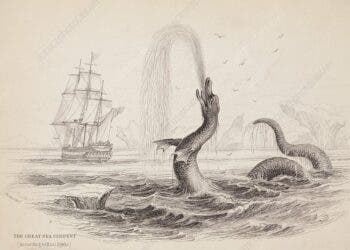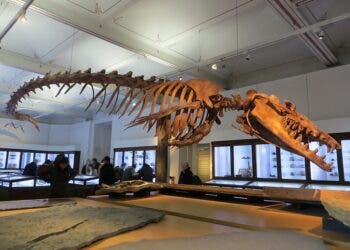A group of researchers at University of British Columbia and the Smithsonian Institution have discovered a new sensory organ in rorqual whales, a subspecies of baleen whales, which also includes the largest animal that has ever lived, the blue whale, capable of reaching 150 tonnes. The scientists involved in the study claim that this organ plays a vital role in the Rorqual whales signature lunge-feeding behaviour, responsible for their enormous size.
Rorqual whales include blue, fin, minke, and humpback whales and are notoriously known for their enormous size, but also for their melodic, haunting calls, whose sounds can travel across thousands of miles in the ocean. Their main physiological characteristic is a special, accordion-like blubber layer that goes from the snout to the navel. This blubber can expand several sizes its resting size during feeding, during which massive quantities of prey-filled water to be swallowed and then expelled back out while filtering the prey.
Scientists collected samples from recently deceased fin and minke whale carcasses captured as part of Icelandic commercial whaling operations, and scanned them. A three dimensional map of the internal structure of whale tissues, revealed a grape fruit-sized sensory organ, located between the tips of the jaws, and supplied by neurovascular tissue.
“We think this sensory organ sends information to the brain in order to coordinate the complex mechanism of lunge-feeding, which involves rotating the jaws, inverting the tongue and expanding the throat pleats and blubber layer,” says lead author Nick Pyenson, a paleobiologist at the Smithsonian Institution, who conducted the study while a postdoctoral fellow at UBC. “It probably helps rorquals feel prey density when initiating a lunge.”
A fin whale, the second longest whale on the planet, can engulf as much as 80 cubic metres of water and prey – equal or greater than the size of the whale itself – in each gulp in less than six seconds.

“In terms of evolution, the innovation of this sensory organ has a fundamental role in one of the most extreme feeding methods of aquatic creatures,” says co-author and UBC Zoology Prof. Bob Shadwick.
“Because the physical features required to carry out lunge-feeding evolved before the extremely large body sizes observed in today’s rorquals, it’s likely that this sensory organ – and its role in coordinating successful lunging – is responsible for rorquals claiming the largest-animals-on-earth status,” Shadwick adds.
“This also demonstrates how poorly we understand the basic functions of these top predators of the ocean and underlines the importance for biodiversity conservation.”
The findings were reported in the journal Nature.
Source: University of British Columbia via Planet Save.






